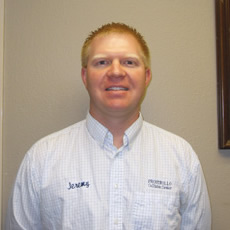Asked by Jeremy Blom, manager, Prostrollo Collision, Huron, S.D. If you were to start a new shop today, what would you do to drive customers to your door?
If you were to start a new shop today, what would you do to drive customers to your door?
Marketing for a new business presents some unique challenges. For an existing shop, the most effective marketing tactic is to focus on the existing customer base. In a new facility, there is no customer base.
Marketing Plan
Begin by creating a marketing plan. The marketing plan is designed to define how you plan to bring work to the door, where that work will come from and how much you plan to spend. Generally, a good marketing plan represents 30 percent of the overall business plan. Find past articles on shop marketing on the web at bit.ly/BSBmarketing. There’s a lot of good information out there.
My guess is that you don’t want a bunch of “consultant crap” about building a plan. You probably need quick ideas that may be implemented immediately, so here you go:
1. Sell what comes to your door now. Earlier, I said that the most effective marketing tactic is to focus on your existing customer base. As a new shop, you don’t have an existing customer base…so you need to build one. Learn to sell. Measure your close ratio [# of sales opportunities (estimates) / number of ROs x 100 = close ratio %]. If you’re doing a good job of selling, your close ratio should be in excess of 75 percent. The industry average is closer to 55 percent. That represents a great opportunity. Step 1 is to effectively convert sales opportunities into repair orders. That builds your customer base so that you can take advantage of it as a marketing tool.
2. Define your company. Build your value proposition. Just what makes your collision center different from the competition? What do you bring to the table? Why do people buy from you? Say it in two paragraphs. This creates the foundation of your business and marketing plans.
Example: At Prostrollo Collision, we view the vehicle owner as our customer and we strive to convert each customer into a raving fan of our business. We are committed to work with insurance carriers to satisfy our mutual customer. We feel that providing the highest quality repair in the shortest possible repair cycle time will provide the foundation for a lifetime relation-ship between Prostrollo Collision and our customers.
3. Measure CSI. If each customer is to be a raving fan, we should check with each one to make sure we made them happy and look for areas to improve our business from the customer’s perspective.
4. Build an Internet presence. On the Internet, old shops and new shops look the same. There are lots of services out there that create effective and economical websites. Get one! Make sure that once you have a website, it can be found. Go to bit.ly/BSBwebsite to learn more about how to get your website found by consumers searching for body shops.
5. Network with everyone you know. Network with everyone you know. If you’re involved in a church or community service organization, make sure everyone there has your card. That card should have your value proposition on the back and your web address on the front. Employees should have their own cards, and an incentive program can be used to reward em-ployees who refer their family and friends to your shop. Join your local Chamber of Commerce and participate! Bring cards, fliers and other promotional materials to the meetings. Follow up with other members, especially insurance agents. Host a meeting.
6. Get marketing education. Most of us do a great job repairing damaged vehicles, but that doesn’t make us great businesspeople or marketers. Get education. For a source of low-cost, pinpoint-accurate marketing ideas, buy a new version of “Guerilla Marketing.” But don’t stop there. Keep trying new things. Another great source of information is, “How to Market and Promote your Business in a Small Town.” Both now have websites full of ideas. Get the books first.
7. Once you have a customer base, use them as salespeople for your business. All too often, we repair a car and that’s the end of it. Look at each customer as a lifetime referral source.
8. Go back to basics and build a good business plan and marketing plan. Marketing has a cost; build that cost into your budget (figure 5 percent of sales going back into marketing at the beginning). Measure what’s working and what’s not. Look for a consistent return on your marketing investment. Don’t be afraid to try new things – keep lots of marketing tools out there working for you.
Hank Nunn is a 35-year collision industry veteran. Among his many roles, he has been an adjuster, shop owner, technician, consultant and trainer. Currently, he’s western regional collision director for AutoNation. The material for this article was taken from Hank’s “Marketing for a DRP” presentation at NACE 2011. He may be reached at [email protected].













